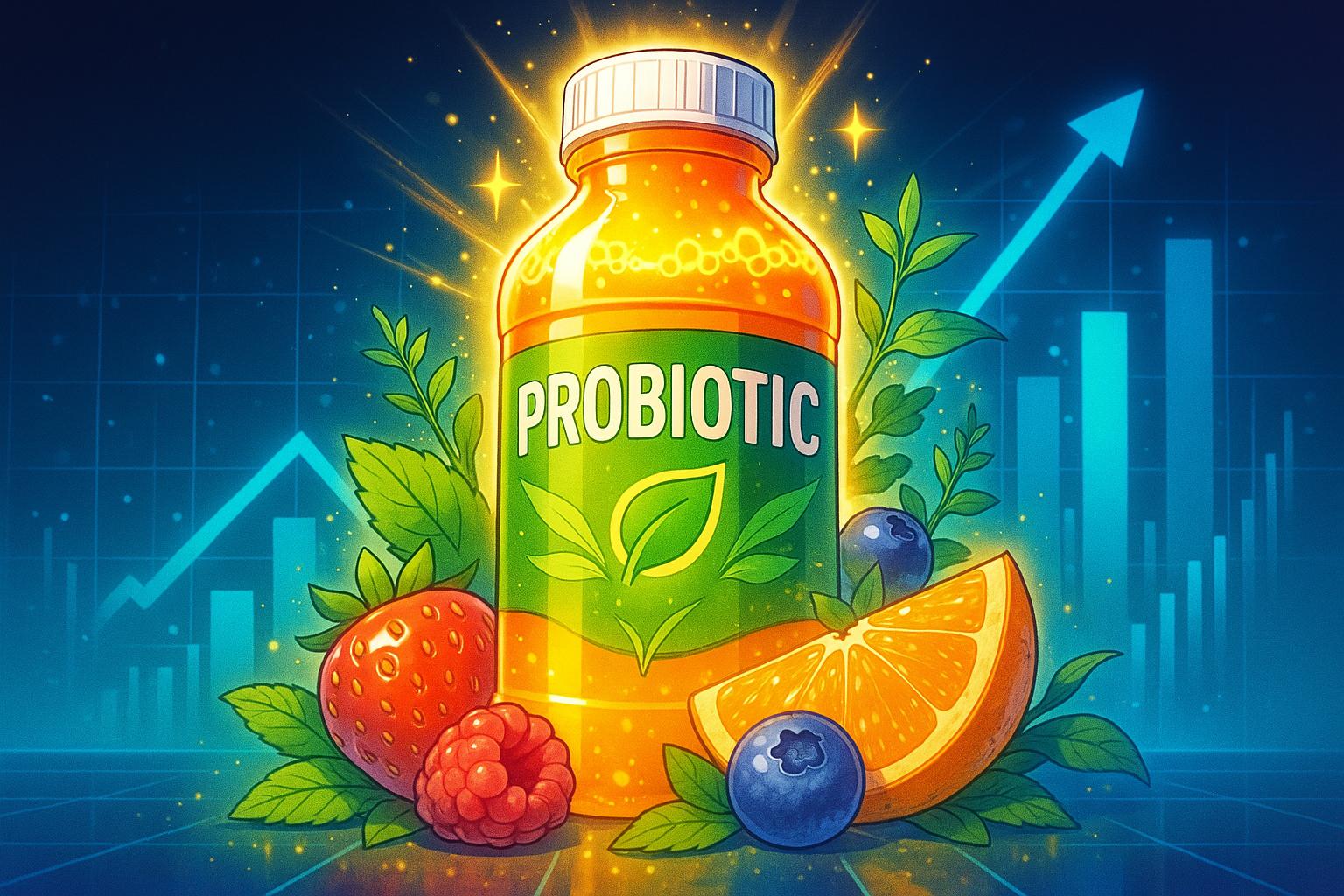The probiotic drinks market is on an impressive trajectory, having been valued at $11.05 billion in 2020 and projected to reach approximately $23.4 billion by 2031, representing a compound annual growth rate (CAGR) of 6.6% during this period. This growth reflects a broader shift in consumer behaviour, driven by an increasing emphasis on health and wellness, particularly following the COVID-19 pandemic. With mounting healthcare costs and a rising awareness of preventive health measures, probiotic drinks have emerged as a viable option for consumers seeking to enhance their overall well-being.
Functional beverages, which include a range of products fortified with beneficial ingredients, are particularly appealing due to their practicality in meeting consumer demands for convenience, taste, and nutritional value. Probiotic drinks, made by fermenting water, sugars, herbs, or fruit extracts with probiotic cultures, offer specific health benefits such as improved gut health, enhanced immune function, and support for digestion. As the understanding of the gut-brain connection grows, so too does the recognition of intestinal health as a vital component of overall wellness. Recent research indicates that about 70% of the body’s immune system resides in the gut, positioning probiotic drinks as a strategic tool in health management.
The rising incidence of gastrointestinal disorders and the prevalence of lactose intolerance have contributed significantly to the increasing consumption of both dairy and non-dairy probiotic drinks. Consumers are notably shifting towards plant-based options, with the market for plant-based probiotics anticipated to expand from $3.72 billion in 2020 to around $8.12 billion by 2031. This is largely fuelled by more individuals adopting vegan and lactose-free lifestyles, seeking alternatives that align with their dietary preferences.
The explosion of interest in varied flavours is another factor influencing market dynamics. While traditional offerings continue to resonate, a growing demand for innovative, fruit-based flavours, particularly berry, has emerged. This segment is expected to grow at a CAGR of 7.6% over the forecast period, as consumers increasingly seek products that offer both health benefits and taste diversity. Flavoured probiotic drinks produced from natural ingredients are becoming a staple for health-conscious individuals, thus broadening the product offerings available on the market.
Sales channels for probiotic drinks are also evolving. Research indicates that hypermarkets and supermarkets accounted for a significant $4.09 billion in 2020, with a projected CAGR of 6.7% to reach $8.77 billion by 2031. These traditional retail formats remain crucial for consumers, providing easy access to a variety of probiotic drink options. In parallel, online retail channels are emerging as key competitors, claiming 23.7% of the market share in 2020. The convenience and accessibility of e-commerce align well with modern consumer lifestyles, hence their increasing prominence.
Regionally, Europe has established itself as a dominating force in the probiotic drinks market. With a notable shift towards healthier consumption choices, European consumers are increasingly inclined to invest in premium health products, thus propelling the sector's growth. The market here is particularly characterized by a solid demand for dairy-based probiotics, notwithstanding the rising interest in plant-based alternatives. Countries such as the UK, France, and Germany are witnessing heightened consumer engagement with health products, driven in part by a culture that prioritises digestive health.
As the market continues to expand, industry players are adopting various strategies, including product launches and business expansions, to capture market share and innovate within the sector. Key players such as PepsiCo, Yakult Honsha, and Danone are leveraging their capabilities to introduce new offerings aimed at meeting the evolving preferences of health-focused consumers.
In conclusion, the probiotic drinks market is positioned for sustained growth, underpinned by increasing consumer awareness surrounding health benefits and a shifting landscape towards more diverse and plant-based offerings. As the interest in gut health continues to grow, innovators within the industry must remain agile and responsive to consumer demands to secure their foothold in this dynamic market.
Reference Map
- Paragraphs 1, 2
- Paragraphs 3, 4
- Paragraphs 5
- Paragraph 6
- Paragraphs 7
- Paragraph 8
- Paragraphs 9
Source: Noah Wire Services
